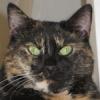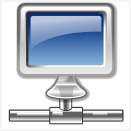For months now, many of use have been happily running Mac OS X along side of Windows on our Intel Macs. But we've always face the problem with Mac OS X not being able to write over to our Windows drive. Well, just a few days ago Amit Singh of Mac OS X Internals and current Google employee have found a way to solve this problem. MacFUSE's Google Code site gives us more in depth details.
"MacFUSE implements a mechanism that makes it possible to implement a fully functional file system in a user-space program on Mac OS X (10.4 and above). It aims to be API-compliant with the FUSE (Filesystem in USErspace) mechanism that originated on Linux. Therefore, many existing FUSE file systems become readily usable on Mac OS X. The core of MacFUSE is in a dynamically loadable kernel extension.
How FUSE-compliant is MacFUSE? Well, enough so that many popular FUSE file systems can be easily compiled and work on Mac OS X--often out of the box. Examples of file systems that work have been tested (to varying degrees) include sshfs, ntfs-3g (read/write NTFS), ftpfs (read/write FTP), wdfs (WebDAV), cryptofs, encfs, bindfs, unionfs, beaglefs (yes, including the entire Beagle paraphernalia), and so on."
A dream come true for dual booters everywhere, has finally become a reality.







Recommended Comments